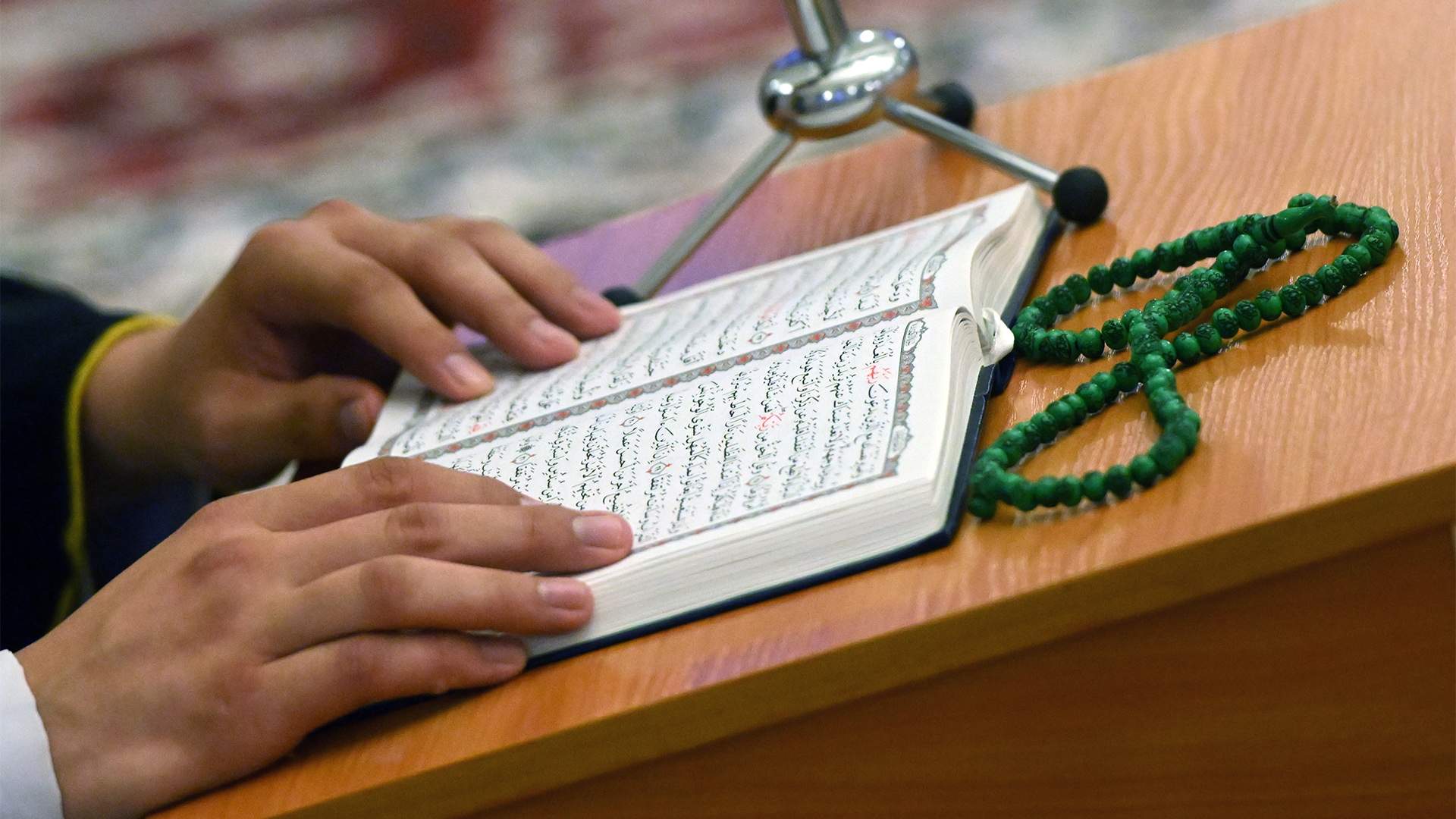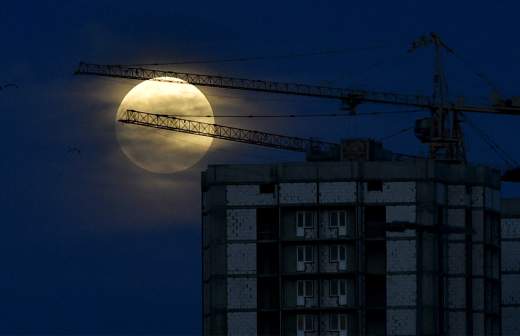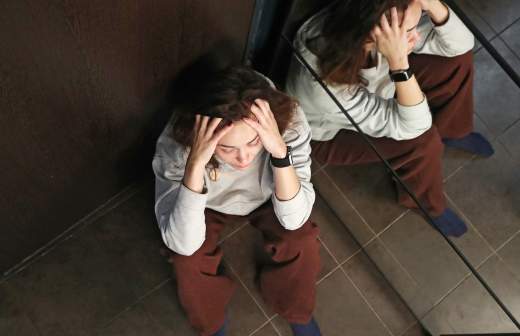- Статьи
- Local news
- Muslim holidays in 2025: when Ramadan, Eid al-Adha, Uraza al-Adha and other important dates
Muslim holidays in 2025: when Ramadan, Eid al-Adha, Uraza al-Adha and other important dates

In 2025, Muslims around the world will traditionally celebrate many holidays associated with important events in Islam. The Muslim calendar includes 12 months and is linked to the lunar cycle, so the dates of holidays change every year. The holy month of Ramadan and the holidays of Uraza Bayram (the end of Ramadan) and Eid al-Adha are considered the most important, but there are other equally important days. Read more about how the calendar is kept in Islam and when the holy days of fasting will come - in the material of "Izvestia".
Muslim holidays: the lunar calendar, how the chronology is carried out
The Muslim calendar is counted from the Hijra - the date of resettlement of the Prophet Muhammad and the first Muslims from Mecca to Medina. The approximate date of this event is July 16, 622 AD. At the same time, the day in the Islamic calendar begins not at midnight, but at sunset. The beginning of the month is neomenia - the day when the sickle of the Moon can be seen in the evening twilight for the first time after the new moon.
The Islamic year is 11 days shorter than the Gregorian year - it has only 354 days (there are no leap years in standard religious calendars). All this leads to the fact that the months of the Muslim lunar calendar have no fixed dates and are constantly moving. For example, the holy Ramadan, during which one is supposed to fast, has moved from the middle of summer to the end of winter in just 10 years.
However, not all Muslims live by the lunar hijra. In Iran and Afghanistan, the Jalali calendar (solar hijra), developed in 1079 by a group of astronomers under the leadership of Omar Khayyam, is still in use. In this calendar, the year is counted from the day of the vernal equinox, which always occurs on March 20 in the Northern Hemisphere. On this day both believers and non-believers have long celebrated the spring holiday Nowruz.
According to the Muslim calendar, 2025 falls on two years at once: 1446, which continues, and 1447, coming in the summer.
Islam also has four forbidden months that are considered sacred: Muharram, Rajab, Zul-qada and Zul-hijjah. In ancient times, it was forbidden to wage wars and hunt near the Kaaba during this time so as not to accidentally kill pilgrims.
The Holy Month of Ramadan in 2025: beginning and end, description
Ramadan is considered one of the five pillars of Islam. During this period, Muslims observe a fast, which is recognized as the strictest among all religions. In 2025, Ramadan will last from February 28 to March 29. At sunset on March 30, believers will celebrate the feast of breaking the fast, Uraza al-Fitr (Arabic name: Eid al-Fitr), the second most important holiday after Eid al-Fitr.
The month of Ramadan was first mentioned in the Koran, the holy book of Muslims, the author of which, according to legend, was Allah himself. According to legend, it was in this month that Prophet Muhammad conquered Mecca. During the month, Muslims refuse any food and water during daylight hours, from suhoor to iftar. Abstinence from food is accompanied by five times namaz: fajr (morning), zuhr (midday), asr (afternoon), maghrib (evening), isha (night).
Thus, suhur represents the first meal. The believers try to eat breakfast in the dark time of the day, before the first signs of dawn appear in the sky. It is believed that Allah will reward the person who performs this ritual as early as possible. The time of suhoor coincides with the morning namaz. Iftar is a Ramadan meal, the last meal of the day. Dinner begins after sunset. The time of iftar corresponds to the time of maghrib.
However, in some regions, due to the long daylight hours, the pause between meals can reach 19 hours. Therefore, for those who find it difficult to endure such a break, it is possible to fast according to the hours of Mecca.
Muslims begin to prepare in advance for the end of the holy month (the holiday of Uraza Bayram). They thoroughly clean their houses and yards, put on their best clothes and set a festive table. It is also obligatory to give alms in food or money. It is believed that helping the needy can make up for a mistake a believer may have made while fasting.
During this time, Muslims refuse not only water and food during the day. Believers are forbidden to smoke tobacco or hookah and to be sexually active. At the same time in Ramadan it is possible to kiss, donate blood and bathe, keeping water out of the mouth.
Uraza-Abayram in 2025: what number, how to celebrate
Uraza-Abayram is one of the oldest Muslim holidays. The celebration dates back to the time of the Prophet Muhammad. It is believed that it was he who was the founder of the Day of Feast in 624.
The meaning of the holiday is revealed in its name. Thus, in Arabic the day sounds like Il al-Fitr, which literally means "the holiday of the cessation of fasting". The Turkic name Uraza Bayram comes from the Persian word "ruza", meaning fasting, as well as from "bayram", which translates as a holiday.
On the evening before the special day, believers perform namaz at home. It is believed that prayer on this night has a special power and will definitely be heard. And in the morning in mosques begins gaet-namaz or id-namaz (collective festive prayer), which gathers thousands of Muslims. Mostly only men attend the prayer, women more often watch the online broadcast at home.
Before performing the festive prayer, one should distribute the obligatory "alms of supper" - zakat al-fitr. Each person should help low-income families with money or food.
After the solemn sermon Muslims return home for a festive dinner. Hostesses prepare in advance a variety of dishes for a large number of guests, as it is customary to invite relatives, friends and neighbors to the holiday. Revelry takes place in a wide circle. In addition to the ritual beshbarmak, manty, pilaf and sujuk are served, belyashi and echpochmaki are baked and sweets are displayed. Dried fruits such as figs, dates and sweet raisins are considered obligatory at the meal. Tea, juices and morsels are offered as drinks, alcohol is always forbidden among Muslims.
Besides, in some countries there is a tradition similar to caroling: children go around the houses in the morning and ask for sweets. That's why every hostess specially buys various goodies for the little guests. Also after morning prayers it is customary to go to the cemetery. Believers visit ancestors' graves, read the Koran and pray for deceased relatives.
Eid al-Adha in 2025: when, how Muslims celebrate it
Eid al-Adha is celebrated on the tenth day of the month of Zul-Hijjah, 70 days after the holiday of Uraza al-Adha. In 2025, the holiday falls on the night of June 5-6. The holiday is usually celebrated for three days, meaning it will last until Sunday, June 8. In some Islamic states, the celebration goes even longer - several days in a row.
According to Muhammad-Khazrat Baybikov, imam of the Ihsan Mosque, Eid al-Adha is a holiday of sacrifice and one of the two main days of the year for Muslims. In Arabic it is called Id-al Adha, i.e. "the Feast of Sacrifice".
On this day, believers recall a story from the 37th sura of the Koran, which is also mentioned in the Old Testament. According to legend, an angel named Jabrail (Gabriel) appeared to the prophet Ibrahim (Abraham in Christians) in a dream. He conveyed to Ibrahim the command of Allah to sacrifice his son to the Most High. Although he was tormented, he came to the valley of Mina with his son, who knew what awaited him but did not resist. Both treated Allah's command as a test of devotion.
At the last minute, Allah Almighty made Ibrahim's knife stop cutting and the Prophet was commanded to slaughter a ram instead of his son. He was rewarded for his fortitude of faith, and later the prophet had a second son, Ishaq.
Believers start preparing for the holiday a month and a half before Eid al-Adha. They do not organize feasts, cut their hair or shave. Many are preparing to make the Hajj pilgrimage.
As the expert notes, the holiday is the end of Hajj. Every Muslim should visit the holy city at least once in his life, if his health, financial condition and external circumstances allow him. On the eve of the holiday (June 5), a Muslim should be on Mount Arafat. On the day of Eid al-Adha itself, believers go to the Valley of Mina, where a symbolic stone-throwing takes place, followed by a sevenfold circumambulation around the Kaaba, a cubic structure located in the courtyard of the Preservation Mosque in Mecca.
Muslims perform the sacrifice at their place of residence or their location during the holiday. At the end of the ritual, the meat is distributed. One third must be given to the poor and needy, another third to guests and relatives, and the rest is left to the family.
Other Muslim holidays in 2025: what is the date, what is the essence?
In addition to the main Muslim holidays, celebrated with great fanfare, there are those that are accepted to meet in the circle of family and relatives. However, since all celebrations in Islam are set according to the lunar calendar, their dates change every year. "Izvestia" compiled a calendar of other memorable days of Islam for 2025 and shared the main facts about them.
Ragaib Night (celebrated from January 2 to January 3) - the date of the marriage of the parents of the Prophet Muhammad. The holiday is celebrated every year by Muslims around the world in the seventh month of the lunar calendar, which is called Rajab. Believers spend the night in prayers, and the next day they fast. According to Islam, during this month and especially on the night of Ragaib, Allah is most merciful to the believers.
Thenight of Miraj (January 26-27) is one of the main dates for faithful Muslims. It was on this night that Prophet Muhammad recognized two miracles at once. In this regard, the holiday has two names - al-Isra and al-Miraj. The first miracle occurred during the Prophet's journey from Mecca to Jerusalem. The other naming of the celebration is related to the miracle of Muhammad's ascension.
Thanks to the night of Miraj, most Islamic traditions appeared and a special attitude of Muslims to certain deeds was formed. The holiday itself is spent in vigil, reading the Koran, praying and retelling the legend of the miraculous ascension of the Prophet. They visit the mosque to pray together and listen to the Imam's sermon dedicated to this event. The next day, Muslims observe a fast.
Thenight of Baraat (February 13-14) is a time for reflection, reconsideration of deeds, repentance and purification. From the Arabic language "Baraat" is translated as "complete separation", "non-attachment", "purification".
Believers on the night of Baraat perform a special worship - one hundred rakaats of namaz, which is called Salat-ul Haith (namaz of goodness).
Thenight of Qadr (March 26-27) is the most important of the last ten nights of the holy month of Ramadan. The word qadr translates to "predestination" but has its roots in the verb "to constrain." Muslims pay attention to the weather on the night of al-Qadr. It is believed that this is the time when there is a special fragrance outside, whether it is raining or not.
The righteous Muslim's first priority is to make up for any missed namaz. According to a popular saying of the believers, the reward for prayers performed on the night of al-Qadr is equal to worship for 1,000 months in advance. It was on this night that the surahs of the holy book Quran appeared to Prophet Muhammad.
The Day of Arafat, or the Day of Standing on Mount Arafat (June 5) is the time of Muslim pilgrimage to the holy Mount Arafat, the penultimate day of the Hajj, after which believers celebrate Eid al-Adha.
This tradition is linked to the story of Adam and Eve, the first humans on Earth according to both Christian and Muslim beliefs. According to Islam, it was on Mount Arafat that the first humans expelled from paradise met.
Hajj pilgrims spend this day on the slopes of the mountain itself and in the valley near it. This is the Arabian Peninsula, most of which is desert. Mount Arafat itself is small, so there is no shade in the valley. The believers take the ordeal of heat and sun voluntarily.
Thedays of Takbir at-Tashriq (June 5-9) are a period of time when Muslims recite certain words-prayers praising Allah, which are called "takbir". They should be recited after each obligatory namaz (fard-namaz), at the beginning and at the end of water and food intake, as well as in bazaars, roads and homes. As a rule, men do it aloud and women do it in a whisper.
Such a period is of particular importance for those who make the pilgrimage to Makkah. The days of takbir at-Tashriq are the final stage of the spiritual journey. During the three days, believers come to Mina to participate in throwing pebbles at the pillars of the Jamarat. This ritual symbolizes the stoning of Shaitan.
Theday of Ashura (July 5) is the tenth day of the holy month of Muharram. The name "Ashura" translates as "ten". According to tradition, it was on this day that the heavens were created and the first man, Adam, was created. It was then that Allah accepted his repentance.
In addition, on the Day of Ashura the ark of Prophet Nuh (Noah) landed on Mount Ararat, and Prophet Musa (Moses) was saved from Pharaoh. It is customary to pay special attention to doing good deeds on this celebration.
Maulid An-Nabi (September 3) is the birthday of Prophet Muhammad. In different countries the holiday is celebrated on the 12th day of the third month (Rabi al-Awwal) of the lunar Islamic calendar. However, the celebration itself begins the day before with sunset (in some countries the date may differ by a day).
Since the exact date of Muhammad's birth is unknown, the holiday is actually timed to coincide with the date of his death in 632. On this day in mosques believers praise and bless him, recall his messenger mission, and read the Koran. Special attention is paid to the study of the Sunnah, a set of traditions about the Prophet's deeds and sayings.
Переведено сервисом «Яндекс Переводчик»













